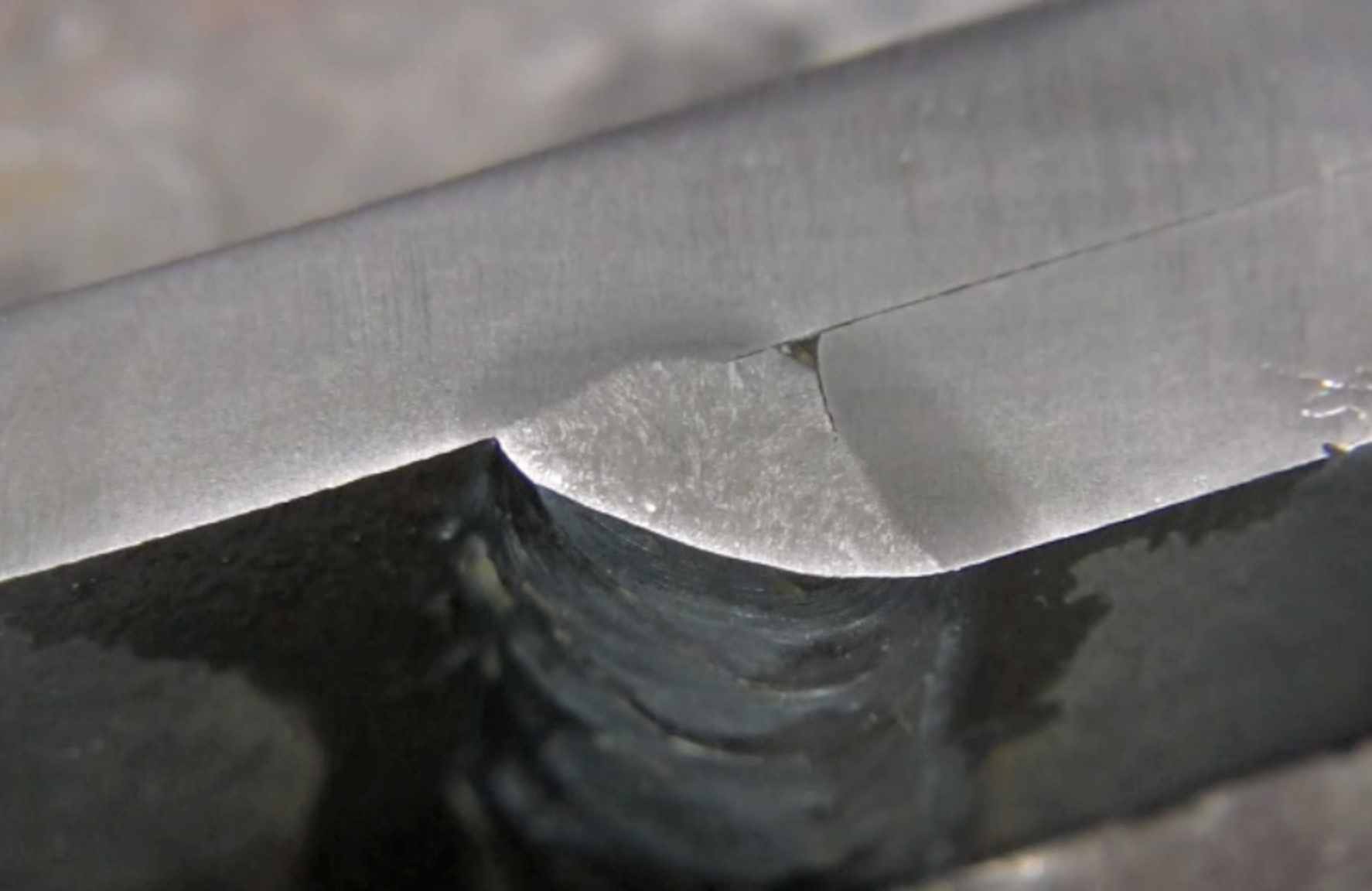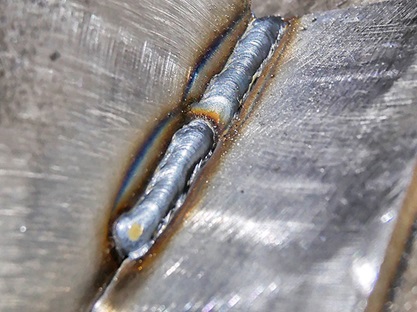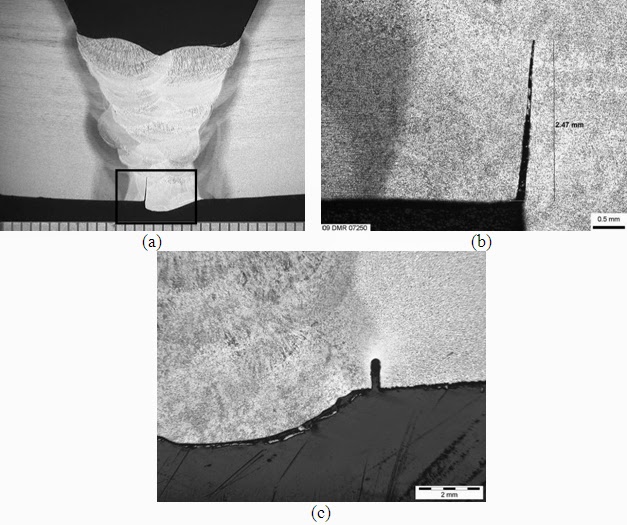Welding defects can be said to be the irregularities formed in a given weld metal as a result of incorrect welding patterns, wrong welding process, or due to poor welding skills from the welder’s part. Weld flaws may come in different sizes, shapes, and degrees of severity.
There are different types of welding defects that can transpire during the welding process. From porosity and cracking, to burn through and undercut, each has several causes.
Fusion Surgery’s Effect on Normal Neck Movements. Depending on how the measurements are done, between one-third and one-half of the neck’s forward/backward and rotational motions occur at the top two levels (between the base of the skull and C1, and between C1 and C2). 2, 3 See The C1-C2 Vertebrae and Spinal Segment. However, most fusion surgeries in the cervical spine occur in one or more. Lack of mobility on flexion and extension radiographs can indicate fusion as well. This finding is especially valuable in skeletally immature children. However, if there is reasonable suspicion for fusion, CT with sagittal and coronal reformats as well as three-dimensional (3D) reconstructions is most useful to delineate bony anatomy, and MRI. Lack of fusion is a very dangerous weld defect in a welded structure. Because of the notch effect, a crack may further propagate under the smallest load applied. This type of defect is very difficult to detect with non-destructive testing methods. LACK OF FUSION Lack of fusion, also called cold lapping or cold shuts, occurs when there is no fusion between the weld metal and the surfaces of the base plate. This defect can be seen in Figure 10-2. The most common cause of lack of fusion is a poor welding technique.
However, regardless of the application and material on which they occur, one thing remains true to all of them; they’re common, costly, cause downtime and loss of productivity.
Luckily enough, there are various remedies that can help welders minimize these welding defects. In this article, we shall be discussing the seven most common welding defects, causes, and remedies plus 2 others.
Keep reading!
What are welding defects?
Welding defects/flaws can be defined as weld surface irregularities, imperfections, discontinuities, or inconsistencies that are formed in welded parts.
These defects differ from the desired weld bead size, shape, and quality. Welding defects could occur either from the outside or inside the weld metal.
Defects in weld joints could cause the rejection of parts and assemblies, an increase in the cost of maintenance, a reduction in performance and could cause catastrophic failures posing the risks of loss of life and property.
Welding defects and remedies
Mistakes sometimes occurs during a welding process. These could lead to different forms of welding defects. As a guide, We present to you the seven most common welding defects and their preventive measures.

1. Porosity
Porosity usually occurs as a result of weld contamination. This happens when gas is trapped inside or along the surface of the weld metal. Just like other weld defects, Porosity results in weak welds that may easily collapse.
• Causes of Porosity:
Often, Contaminated or inadequate shielding gas is the common cause of porosity.
However, Porosity could also be caused by using too high gas flow, longer arc, inadequate electrode deoxidant, and the presence of paint, rust, grease, or oil.
At the same time, having a dirty base metal or extending the welding far beyond the nozzle could cause porosity.
Additionally, air currents from cooling fans may contaminate the shielding gas envelope around the weld-puddle, thereby causing porosity.
Another common cause of this welding flaw is poor seal (loose-fitting) in the shielding gas channel.
• Remedies for Porosity:
You can remedy the porosity of a weld by; cleaning the materials to be welded before you begin welding, using correct arc distance, employing the proper welding technique, and using the right electrodes.
Again, ensure that there is adequate gas flow and replace any gas hoses that may be causing leaks. Also, when welding outside or in drafty areas, place a welding screen around the work area. This will help ameliorate porosity issues.
2. Undercutting
Undercutting is a crater or groove that is formed near the toe of the weld. In this case, the weld metal fails to fill-in the grooved area resulting in a weak-weld that is liable to cracking along the toes.
• Causes of Undercutting:
Wrong filler metal, excessive heat, fast weld speed, as well as poor welding technique, may all leads to undercut welding defect on a welding joint.
Also, very high weld current, incorrect use of shielding gas and using the wrong electrode could cause undercuts.

• Remedies for Undercutting:
Undercutting in welding can be avoided by employing the right welding technique that does not involve excessive weaving.
Lowering the arc length and minimizing the travel speed of the electrode can also help prevent undercutting.

Another remedy to undercutting problem is adjusting the angle of the gun to point directly towards the weld joint.
3. Burn Through
As the name implies, burn through occurs when the weld metal penetrates through the base metal, burning through it. This kind of welding flaw is most common with soft or thin metals, especially those that are 1/4″ or less. Also too much weld penetration can often lead to burn through.
• Causes of burn through:
The primary cause of burn through is excessive heat. Also having too large root opening on the weld joint can results in burn through.
• Remedies for burn through:
When burn through occurs, the easiest way to rectify the problem is to lower the voltage and the wire feed speed.
Also increasing the travel pace can help remedy the problem, especially when welding on aluminum material.
Increasing the wire extension and using a weaving technique while welding can also help minimize the potential for burn through.
4. Incomplete Penetration
Incomplete joint penetration (lack of penetration) happens when there is a shallow fusion between the base metal and filler metal, rather than full penetration of the joint. It results in a gap, cracks, or even joint failure.
• Causes of incomplete joint penetration:
Incomplete joint penetration could occur when the groove you are welding is too narrow, and the weld metal does not reach the bottom of the joint.
Improper joint preparation and insufficient heat input are the two primary causes of lack of penetration. Improper shielding gas mixture and welding wire diameter can also be a factor.
Also, if you leave too much space between the two metals you are welding, the metals will not melt together on the first pass and hence results in incomplete penetration.
• Remedies for incomplete penetration:
There are a number of remedies for incomplete joint penetration; this includes; using higher wire feed speed and voltage, reducing the travel pace to allow more weld metal penetrates through the joint, and proper joint design and preparation.
The joint should be prepared in such a way to allow the welder to maintain the proper wire extension and still access the bottom of the weld joint. Again, ensure that ‘the wire type and diameters’ and ‘the gas and the gas mixture’ are compatible.
5. Cracks
Weld Cracks are the most serious type of welding defects. Weld Cracks are not acceptable in the welding industry.
However, a crack may occur just about everywhere in a weld; in the weld metal, on the plate next to the weld metal, or anyplace affected by intense heat.
The three major types of weld cracks are: Hot cracks, cold cracks, and crater cracks
• Causes of weld cracks:
Weld Crack could be caused by so many things such as base metal contamination, poor joint design, failure to preheat before welding, low welding current, high welding speed, using hydrogen when welding ferrous materials and welding at too high voltage.
Lack Of Fusion
• Remedies for weld cracks:
You can prevent this type of weld flaw by using the right metal. Proper joint design and preparation is also another way to prevent cracking. Crater cracking can be prevented by using a backfilling technique. Right Selection of filler metal and shielding gas can also help prevent cracking problems.
6. Incomplete Fusion
Incomplete fusion occurs when the weld metal fails to properly fuse with the base metal, or when the individual weld beads don’t fuse together. This type of weld defect is also referred to as cold lap.
• Causes of incomplete fusion
Incorrect gun angle is the most common cause of incomplete fusion. However, contaminants on the base metal and insufficient heat can also cause this weld defect.
In some instances, too short arc length, very high travel speed, too low welding amperage or when the electrode size is too small for the thickness of the metal you are welding, all could result to incomplete fusion.

• Remedies for incomplete fusion:
The very first thing to do to prevent this weld flaw is to properly clean the base metal before you start the welding; make sure that the base metal is free of oil, grease, dirt or other debris.
Make sure the weld angle is between 0 to 15 degrees; this will allow you to fully access the groove of the weld.
Also, for joints that require weaving technique, holding the arc on the sidewall for some time is very vital to help prevent this type of defect. Ensure that there is enough heat input to coalesce the base metal and the weld metal fully.
7. Slag Inclusions
Slag is the waste material that is usually formed while welding, bits of this solid waste material may accidentally be incorporated into the weld and causes contamination.
• Causes of slag inclusions:
Some of the common causes of slag inclusions include failure to properly clean a welding pass before applying the next pass, incorrect welding angle, incorporation of flux from stick welding electrode, and too low welding amperage.
8. Warpage
Warpage is an unwanted distortion in the shape of a piece of metal. This occurs when the welder fails to properly control the expansion and contraction of the base material.
This is a collection of handpicked handwriting script fonts from Google Fonts. For a more modern look, check out the Modern script fonts from Google Fonts collection. They are classic scripts, calligraphic, some with vintage charm even, perfect for elegant projects like weddings, feminine blogs, monograms, signatures or social media images. Fonts for google slides. Looking for Google fonts? Click to find the best 36 free fonts in the Google style. Every font is free to download! Best free handwriting fonts from Google Fonts 2020. Beautiful handwriting font, with excellent readability. Nice “bubbly” rounded edges and a carefree feel. An informal style handwriting font optimized for web usage. Looks casual, like an everyday. Extensis Fonts for Google Docs and Google Slides allows you to view your Google font collection in a convenient panel, sort by style, and find inspiration in fonts that are trending. You can try out different fonts directly in your document. Simply find the font you want to preview, select your text, and click the font from the panel to apply. Making the web more beautiful, fast, and open through great typography.
• Causes of warpage:
Warpage may arise when the welder clamps the welding joints too tightly, welding a piece of metal over and over again can also cause the metal to warp.
Lack Of Fusion Defects
When welding a T-joint, the vertical part of the ‘T’ may sometimes pull itself towards the weld. Also, the more heat input you use, the more the chances you have to end up with a warpage.
• Remedies for warpage:
Warpage can be prevented by using only the required amount of heat. Opting for moderate travel speed and wire feed speed while welding can also help curtail the problem of warpage.
9. Overlap
overlap occurs when the weld face extends far above the weld toe. In this case, the weld metal rollout and forms an angle less than 90 degrees.
• Causes of Overlap
Overlap welding defect can arise when using large electrodes greater than the metal size. High welding current and the use of improper welding technique can also cause this defect.
• Remedies for Overlap
Overlap welding defect can be avoided by employing the correct welding Technique, using small Welding electrode and less welding has.
Conclusion
While welding defects and discontinuities may arise due to the welder’s poor welding skills, however, even the most skilled and experienced welders may in one way or another experience weld defects.
But the only way to stop these welding irregularities from negatively affecting productivity and increasing the cost of operations is by identifying and rectifying the problems as quickly as possible.

